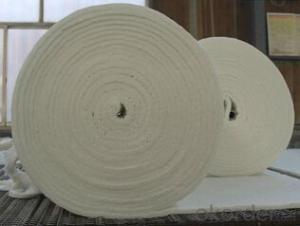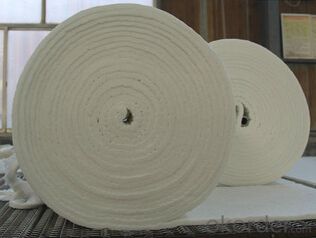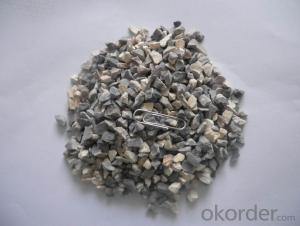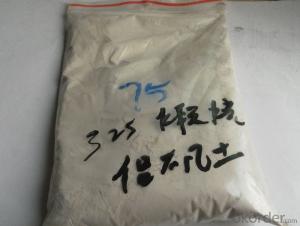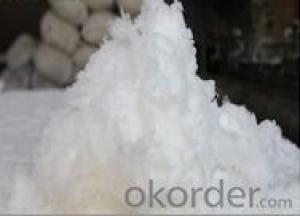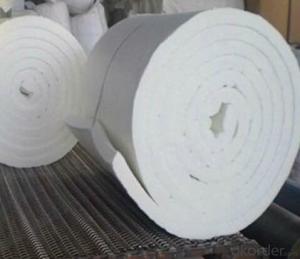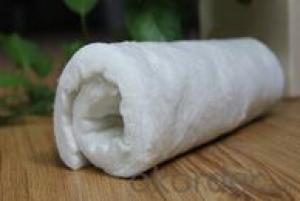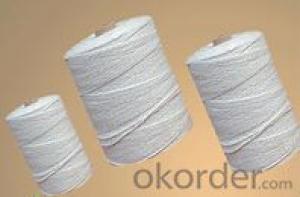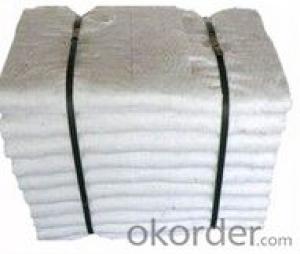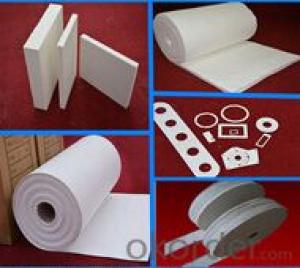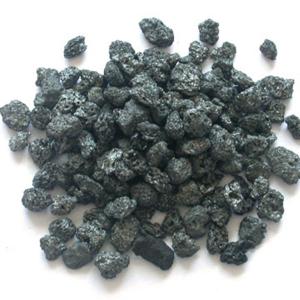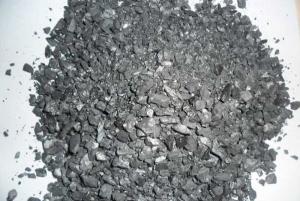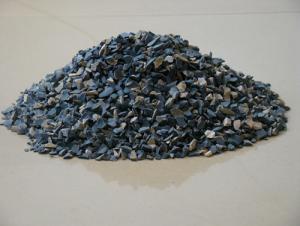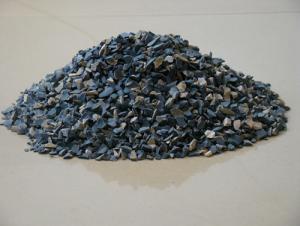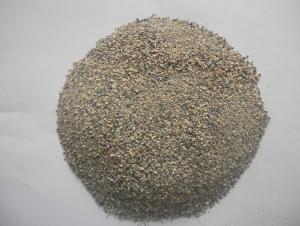Raw Materials for Refractory:Insulation Ceramic Fiber Yarn Reinforced with Fiberglass
- Loading Port:
- China Main Port
- Payment Terms:
- TT OR LC
- Min Order Qty:
- -
- Supply Capability:
- -
OKorder Service Pledge
OKorder Financial Service
You Might Also Like
Specifications
1. Ceramic fiber yarn
2. Temperatuer up to 1260C
3. High strength
4. For heat insulation
High Temperature Ceramic Fiber Yarn Description:
1. High Temperature Ceramic Fiber Yarn is manufactured from high quality alumina-silica ceramic fiber and has been mechanically twisted to give it tensile strength.
2. High Temperature Ceramic Fiber Yarn is available as E-glass or stainless steel wire reinforced yarn from 425 tex to 2500 tex in single, two or three plies.
3. High Temperature Ceramic Fiber Yarn can be woven, plaited into numerous forms of products which are strong,
chemically stable and exhibit superior thermal properties, ideal for most industrial high temperature applications.
4. Product made of High Temperature Ceramic Fiber Yarn resist attack from most corrosive agents, except hydrofluoric, phosphoric acids and concentrated alkalis.
5. High Temperature Ceramic Fiber Yarn STYLE 4300: Ceramic Fiber Yarn With Fiberglass Filament insert.
High Temperature Ceramic Fiber Yarn Package:
1. 1.25kg/roll, 24rolls/ctn; or 1.25/kg/roll, 40rolls/plastic woven bag.
High Temperature Ceramic Fiber Yarn Application:
1. High temperature gaskets.
2. Making cloth, tape, rope, etc.
3. Sewing thread for high temperature textiles.
High Temperature Ceramic Fiber Yarn Tech Data:
Colour | White | |||||
Al203+sio2% | >=97 | |||||
Fiber diameter(um) | 2-4 | |||||
Fiber Iength(mm) | 100-200 | |||||
Bulk density(Kg/m3) | 300-700 | |||||
Moisture % | <=1.0 | |||||
Thermal Conductivity(Hot face),w/m.k | 0.12~0.13(300°C) | |||||
Heating liner shringkage(%) | <=3.5(1000°C*3h) | |||||
High-temperature loss on lgnition | 10 | 15 | 20 | 15 | 20 | 25 |
Safe working temp°C | <=1000 | <=450 | ||||
Acid-resistance and alkali-resistance% | 50(10% NaoH After 72 hours) | |||||
Reinforced material | Stainless Steel | Glass filament | ||||
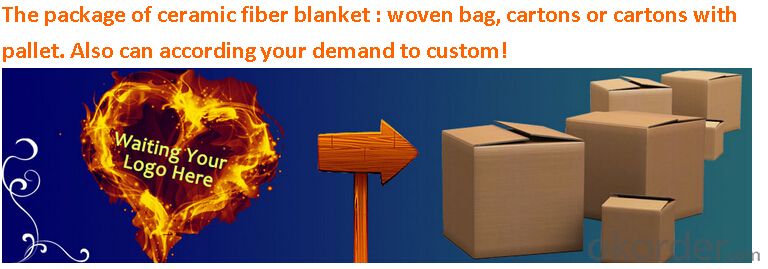
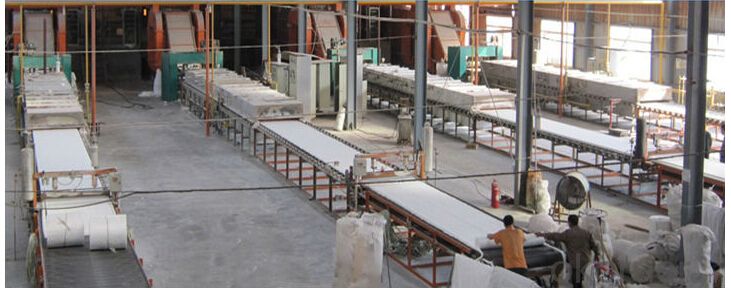
- Q: What are the use of fire-resistant material and admixture?
- Generally speaking, there are several admixtures: 1. Water reducing agent. It can ensure basic refractory castable flow value and significantly reduce its water mixing amount sodium hexametaphosphate and sodium tripolyphosphate 2. Plasticizer. It can increase plastic refractory mixture and enhance the ability of bentonite clay mud material stress strain 3. Gelling agent. It can make the colloidal solution (or suspending liquid containing solid particles condensed gelling agent 4. Dispergator. It can turn condensation or reunion colloidal particles (particles) into sol or uniform dispersion suspended particles and make the thick colloid free stream sol said scattered coagulant peptizer 5. Coagulant. It can shorten the stereotypes refractories condense sclerosis NaOH Mars between aluminum hydroxide, etc. 6. Retarder. It can delay the stereotypes refractories condense sclerosis between citric acid tartaric acid, etc. 7. Delayed coagulant. It can make setting fire-resistant materials contain binder by set out the condensation hardening effect between calcium aluminate cement, etc. 8. Foaming agent. It can reduce the liquid surface of power to produce uniform stability as rosin soap bubble resin fat saponin and so on. 9. Antifoaming agent. It can make fast setting fire-resistant material mixing or shock in produce bubbles escape alcohol fatty acids, such as 10. Shrink agent can reduce or prevent the refractory materials used to produce contraction type heating said silicon powder stabilizer or volume expansion agent, etc. 11. Preservative. It can keep setting fire-resistant material stored on construction performance change or change oxalic acid citric acid, etc. 12. Inhibitors. It can inhibit stereotypes refractories ingredients contain iron or iron compounds and acidic reaction caused inflation to produce hydrogen bond CrO3 diacetone alcohol, etc. I hope it can help you.
- Q: What's the texture of refractory for the hearth of reverberatory?furnace? ?
- High alumina brick; you can use zircon brick under the temperature above 1700? ;may i use mullite bricks under the temperature from 1400 to 1700? you can use clay brick and heavy corundum brick under the temperature of below 1400 degrees, question closely: what's the usage temperature of reverberatory?furnace? < pre accuse = "qRA" > is there someone use refractory fiber?
- Q: Can quantitative feeder be used in refractory plant? Thank you
- Feeder experts, justice and analysis, quantitative feeder, of course, can be used in refractory plants
- Q: What are the meanings of azs, 34% and ec in fused brick?
- The fused brick, also called zircon corundum brick, is shorted as AZS for three chemical components in Al2O3-ZrO2-SiO2 ternary diagram. I don't know the meaning of EC.
- Q: Who knows what is the requirement for fireproofing of interior decoration materials ?
- In addition to the underground building, combustion performance level of interior decoration materials inside windowless room , in addition to a class, should advance 1 level based on the original provisions . Library, archives and rooms storing artifacts, ceilings, walls should use class A decoration materials, and the ground should use decoration materials no lower than class B. When high temperature parts of lighting and lighting lamps and lanterns are close to non - grade A decoration materials should be taken, fire prevention measures such as thermal insulation and heat dissipation must be taken. Combustion performance level of materials used for lighting should be no lower than B. Kitchen ceiling, wall and floor should used class a decoration materials.
- Q: Which schools are the best schools in the world for learning knowledge about refractories?
- Wish it helps you out.
- Q: What's the type of fire proofing thermal insulation materials?
- Hello! Fire proofing thermal insulation material can be classified as inorganic thermal insulation material and composite thermal insulation material. According to the form, it can be divided into fibrous veneer, mineral wool, rock wool, glass wool, aluminum silicate cotton, ceramic fiber, microporous diatomite, calcium silicate, expanded perlite, expanded vermiculite, aerated concrete, bubble foam glass, ash, glass, clay, foam concrete, and pasted paste powder polystyrene particles insulation pulp, etc. They are characterized by flame retardancy and fire proofing and thus can be used in buildings with high fire proofing class. Among them, calcium silicate, aluminum silicate and asbestos can also be used for the thermal insulation for heat supply pipelines.
- Q: How many kilns using refractories are needed? What are the furnaces respectively?
- Rotary kiln, general alumina bricks, high alumina bricks, corundum - mullite brick and vertical kiln. I am limited. Please forgive me that I can only talk about what I know. There are tunnel kiln, clay brick, etc. which can be used in these kiln and shuttle kiln and so on. Shuttle kiln.
- Q: What are the additives and recipes of refractory?
- Trimeric major role played bulk water reduction effect can be considered strong trimer strong bleeding effect'm sure Hey lignin sulfonate water-reducing effect of the strong retarding superplasticizer effect in two critical recommendations with more money to buy homes are equipped who is willing to disclose ah experiments to solve the problem through Chuk Wan
Send your message to us
Raw Materials for Refractory:Insulation Ceramic Fiber Yarn Reinforced with Fiberglass
- Loading Port:
- China Main Port
- Payment Terms:
- TT OR LC
- Min Order Qty:
- -
- Supply Capability:
- -
OKorder Service Pledge
OKorder Financial Service
Similar products
Hot products
Hot Searches
Related keywords
